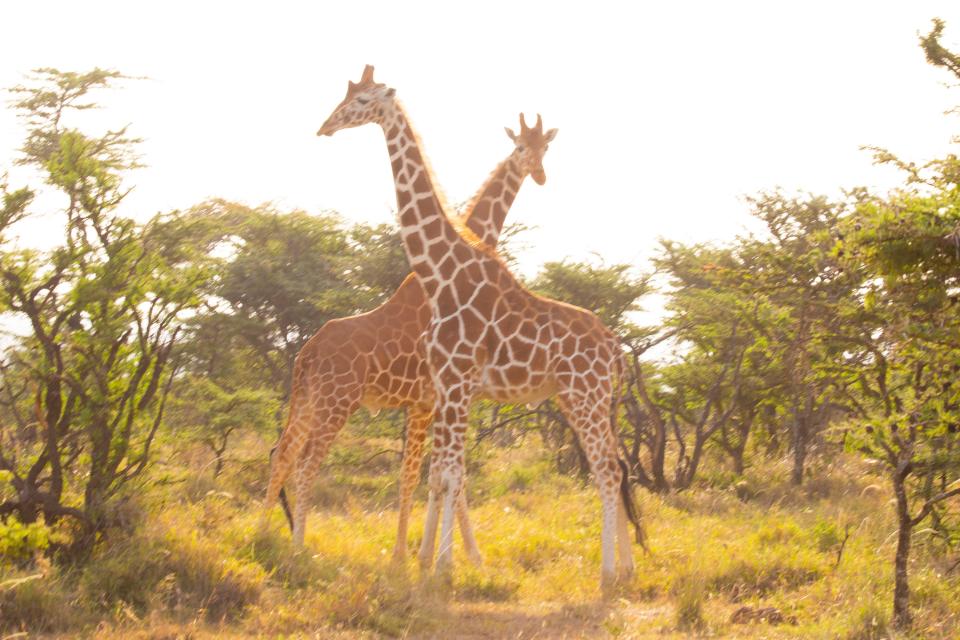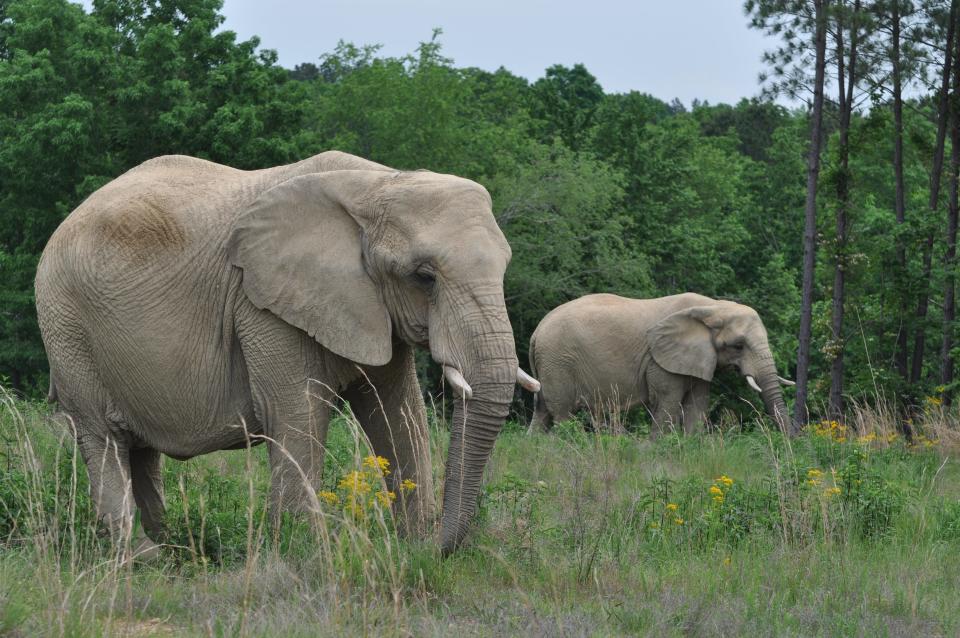Biggest animal in the world? Here are the planet's largest creatures by land and sea.
The natural world is rife with opportunities to contextualize our own existence. Perhaps no instance of this is more jarring though than being dwarfed by the sheer size of some of our fellow earthly creatures.
Ever seen footage of a whale passing by a tiny sailboat or kayak? You get the idea.
Whether by land or by sea, there are plenty of animals big enough to humble even the mightiest among us.
Learn more about the largest animal in the world below, along with its scrawny counterpart — the smallest animal in the world.
What is the biggest animal in the world?
According to the World Wildlife Foundation, the largest animal in the world is the Antarctic blue whale. It can weigh up to 400,000 pounds and stretch an astonishing 98 feet in length.
The Antarctic blue whale’s heart is equivalent in size to a compact car, and the amount of noise it makes as it travels through the ocean is louder than a jet engine.
While the blue whale is the largest whale, honorable mention goes to the bowhead whale, a species residing nearly exclusively in the Arctic and stretching up to 60 feet long.
Is the blue whale bigger than the Megalodon?
The Natural History Museum in London defines the Megalodon as “the biggest shark in the world.” The creature, now extinct, has fossils that date back 20 million years. The museum estimates these menacing creatures grew between 49-59 feet in length.
This measurement renders them smaller than the blue whale.
What is the heaviest animal in the world?
This title is also held by the majestic blue whale. Differing reports put the weight of this impossibly large mammal between 300,000 and 400,000 thousand pounds.
The BBC reports that the mouth of a blue whale is large enough to hold 100 people, and it’s a good thing too because they reportedly consume 13,000 pounds of krill a day.
What is the tallest animal in the world?
Technically, this is still the blue whale. At about 98 feet, the length of this aquatic beast tops all others. BBC reports the next in line is the lion’s mane jellyfish, which has tentacles that can grow up to the same length.
If you’re looking for tall, in its strict definition of standing upright, the tallest land animal and mammal — and the third tallest of all animals — is the giraffe. Giraffes can measure between 14-19 feet tall, according to National Geographic.

What is the biggest land animal in the world?
"Big" can be a tricky term when it comes to science. If, by big, you mean tall, the answer remains the giraffe.
If, however, by "big" you mean general largeness, or how heavy the creature is, it is the African bush elephant that claims that title. These mammals can weigh up to 11 tons, and stand at up to 13 feet tall.

What is the smallest animal in the world?
This is not a question with a simple answer, as Professor of Veterinary Clinical Sciences Nicola Di Girolamo explained in a 2019 article for The Conversation.
The question is complicated in large part by the ongoing debate in the scientific community over what constitutes an animal. The traditional definition, Di Girolamo explains, is an organism made of multiple cells. If you don’t mind classifying something so small you need a microscope to see it, then there is a recently discovered group of parasitic jellyfish called Myxozoa, measuring barely 20 micrometers, that account for some of the smallest "animals" on earth.
If this definition doesn’t meet your fancy, you can shift to the vertebrates category, Di Girolamo explains, meaning animals with backbones. Right now, the smallest known is a type of frog called "Paedophryne amauensisuensis." The average length of this frog’s body is under 8 mm.
However, Di Girolamo stresses that science is a field that hinges on discovery, so the truth of this question now is not a permanent truth. It is only a truth until something smaller is discovered.
What was the first animal on earth?
Another not-so-clear-cut question. The Smithsonian reports that sponges were some of the world’s first animals – able to survive the low oxygen levels in the ocean at least 700 million years ago.
As for land animals, the fossil of a millipede recently discovered in Scotland was traced back 425 million years, making it the oldest known land animal discovered by fossil, Reuters reported.
Important to note, however, is that paleontologist Michael Brookfield of the University of Texas and the University of Massachusetts Boston, who authored the study on the millipede, made sure to clarify that scientists believe soil worms came before this millipede despite a lack of fossil evidence.
Just curious for more? We've got you covered
USA TODAY is exploring the questions you and others ask every day. From "What is the biggest whale?" to "When did dinosaurs go extinct?" to "What is the hottest planet?", we're striving to find answers to the most common questions you ask every day. Head to our Just Curious section to see what else we can answer for you.
This article originally appeared on USA TODAY: What is the biggest animal in the world? Largest creatures ranked.

 Yahoo Movies
Yahoo Movies 
